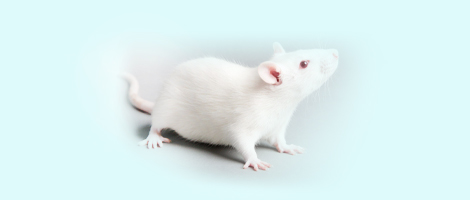| 1 |
罗建波, 李军晖, 周佳, 等. 实验动物饲料标准化工作现状及发展探讨[J]. 实验动物与比较医学, 2022, 42(5):458-465. DOI: 10.12300/j.issn.1674-5817.2022.019 .
|
|
LUO J B, LI J H, ZHOU J, et al. Investigation and discussion on the standardization work of feeds for laboratory animals[J]. Lab Anim Comp Med, 2022, 42(5):458-465. DOI: 10.12300/j.issn.1674-5817.2022.019 .
|
| 2 |
金仕容, 华叶, 訾化星, 等. 一种显著提高实验用斑马鱼繁殖效率和使用寿命的优化养殖方案[J]. 实验动物与比较医学, 2023, 43(3):297-306. DOI: 10.12300/j.issn.1674-5817.2023.004 .
|
|
JIN S R, HUA Y, ZI H X, et al. An optimized experimental zebrafish breeding scheme for significantly enhancing reproductive efficiency and service life[J]. Lab Anim Comp Med, 2023, 43(3):297-306. DOI: 10.12300/j.issn.1674-5817.2023.004 .
|
| 3 |
李志萍, 赵德明, 周向梅, 等. 饲料差异对动物实验研究的潜在影 响[J]. 实验动物科学, 2022, 39(5):85-88. DOI: 10.3969/j.issn. 1006-6179.2022.05.017 .
|
|
LI Z P, ZHAO D M, ZHOU X M, et al. Potential Impact of Feed Differences on Animal Research[J]. Lab Anim Sci, 2022, 39 (5):85-88. DOI: 10.3969/j.issn.1006-6179.2022.05.017 .
|
| 4 |
OIKE H, KOHYAMA K, MOCHIZUKI-KAWAI H, et al. Food hardness influences the progression of age-related hearing loss in mice[J]. Exp Gerontol, 2021, 149:111335. DOI: 10.1016/j.exger.2021.111335 .
|
| 5 |
TASHIRO H, TAKAHASHI K, SADAMATSU H, et al. Saturated fatty acid increases lung macrophages and augments house dust mite-induced airway inflammation in mice fed with high-fat diet[J]. Inflammation, 2017, 40(3):1072-1086. DOI: 10.1007/s10753-017-0550-4 .
|
| 6 |
朱婉月, 左琴, 梁春南, 等. 4种SPF级大鼠活体保种繁殖性能测定与分析[J]. 实验动物科学, 2022, 39(5):57-61. DOI: 10.3969/j.issn.1006-6179.2022.05.011 .
|
|
ZHU W Y, ZUO Q, LIANG C N, et al. Measurement and analysis of conservation and reproductive performance in four SPF rats[J]. Lab Anim Sci, 2022, 39(5):57-61. DOI: 10.3969/j.issn.1006-6179.2022.05.011 .
|
| 7 |
赵伟健, 黎雄才, 汪鹏丽, 等. 饲料硬度对BALB/c裸小鼠生长性能的影响[J]. 实验动物科学, 2014, 31(2):49-51.
|
|
ZHAO W J, LI X C, WANG P L, et al. Effect of feed hardness on growth performance of BALB/c nude mice[J]. Lab Anim Sci, 2014, 31(2):49-51.
|
| 8 |
凌娟,钟浩,姚方,等.不同饲料硬度对小鼠饲料耗损量及血液生化指标的影响[J]. 饲料研究,2013, (02):7-9. DOI:10.13557/j.cnki.issn1002-2813.2013.02.026 .
|
|
LING J, ZHONG H, YAO F, et al. Effect of dietary hardness levels on food consumption and blood biochemical of mice[J]. 2013(2):7-9. DOI:10.13557/j.cnki.issn1002-2813.2013.02.026 .
|
| 9 |
刘甦苏, 吴勇, 曹愿, 等. hKDR +/+人源化及Rag1-/-基因缺陷新型双靶点遗传修饰荷瘤小鼠模型的建立[J]. 实验动物与比较医学, 2023, 43(2):103-111. DOI: 10.12300/j.issn.1674-5817.2022.154 .
|
|
LIU S S, WU Y, CAO Y, et al. Establishment of hKDR +/+ humanized and Rag1-/- gene knockout double genetically modified mouse model[J]. Lab Anim Comp Med, 2023, 43(2):103-111. DOI: 10.12300/j.issn.1674-5817.2022.154 .
|
| 10 |
唐慧青, 常书福, 于志锋, 等. SHJH hr 小鼠部分生物学特性及衰老表型的测定与分析[J]. 实验动物与比较医学, 2023, 43(1):44-52. DOI: 10.12300/j.issn.1674-5817.2022.069 .
|
|
TANG H Q, CHANG S F, YU Z F, et al. Investigation on biological characteristics and aging phenotype of SHJH hr mice[J]. Lab Anim Comp Med, 2023, 43(1):44-52. DOI: 10.12300/j.issn.1674-5817.2022.069 .
|
| 11 |
KIM J E, NAM J H, CHO J Y, et al. Annual tendency of research papers used ICR mice as experimental animals in biomedical research fields[J]. Lab Anim Res, 2017, 33(2):171-178. DOI: 10.5625/lar.2017.33.2.171 .
|
| 12 |
KOOPMAN J P, SCHOLTEN P M, ROELEVELD P C, et al. Hardness of diet pellets and its influence on growth of pre-weaned and weaned mice[J]. Z Versuchstierkd, 1989, 32(2):71-75.
|
| 13 |
STARR M E, SAITO H. Age-related increase in food spilling by laboratory mice may lead to significant overestimation of actual food consumption: implications for studies on dietary restriction, metabolism, and dose calculations[J]. J Gerontol A Biol Sci Med Sci, 2012, 67(10):1043-1048. DOI: 10.1093/gerona/gls009 .
|
| 14 |
寇红岩, 潘训彬, 闫立新, 等. 实验动物饲料硬度和粒度对饲料利用率的影响[J]. 实验动物与比较医学, 2016, 36(4):323-326. DOI: 10.3969/j.issn.1674-5817.2016.04.016 .
|
|
KOU H Y, PAN X B, YAN L X, et al. The effect of size and hardness of feed on feed utilization in laboratory animals[J]. Lab Anim Comp Med, 2016, 36(4):323-326. DOI: 10.3969/j.issn.1674-5817.2016.04.016 .
|
| 15 |
SHOU Y K, ZHU X Z, ZHU D N, et al. Ambient PM2.5 chronic exposure leads to cognitive decline in mice: from pulmonary to neuronal inflammation[J]. Toxicol Lett, 2020, 331:208-217. DOI: 10.1016/j.toxlet.2020.06.014 .
|
| 16 |
水上惟文, 吴健. 动物饲育室空中粉尘和粉尘蛋白[J]. 上海实验动物科学, 1989, 9(4):253-254.
|
|
MIZUKAMI T, WU J. Airborne dust and dust protein in animal feeding room[J]. Shanghai Lab Anim Sci, 1989, 9(4):253-254.
|
| 17 |
李祥磊, 孙秀萍. C57BL/6J、BALB/c、ICR品系小鼠学习记忆能力的行为学差异[J]. 中国比较医学杂志, 2020, 30(8):63-69. DOI: 10.3969/j.issn.1671-7856.2020.08.010 .
|
|
LI X L, SUN X P. Evaluation of learning-memory ability in C57BL/6J, BALB/c, and ICR mice[J]. Chin J Comp Med, 2020, 30(8):63-69. DOI: 10.3969/j.issn.1671-7856.2020.08.010 .
|
| 18 |
CHATKUPT T T, LIBAL N L, MADER S L, et al. Effect of continuous trio breeding compared with continuous pair breeding in 'shoebox' caging on measures of reproductive performance in estrogen receptor knockout mice[J]. J Am Assoc Lab Anim Sci, 2018, 57(4):328-334. DOI: 10.30802/AALAS-JAALAS-17-000125 .
|
| 19 |
GARNER J P, GASKILL B N, PRITCHETT-CORNING K R. Two of a kind or a full house? Reproductive suppression and alloparenting in laboratory mice[J]. PLoS One, 2016, 11(5): e0154966. DOI: 10.1371/journal.pone.0154966 .
|
| 20 |
CHO E, WALSH C A, D'ANGELO-GAVRISH N M, et al. Effects of housing density on reproductive performance, intracage ammonia, and welfare of mice continuously housed as breeders in standard mouse and rat caging[J]. J Am Assoc Lab Anim Sci, 2023, 62(2):116-122. DOI: 10.30802/AALAS-JAALAS-22-000069 .
|







 )
)
 )
)